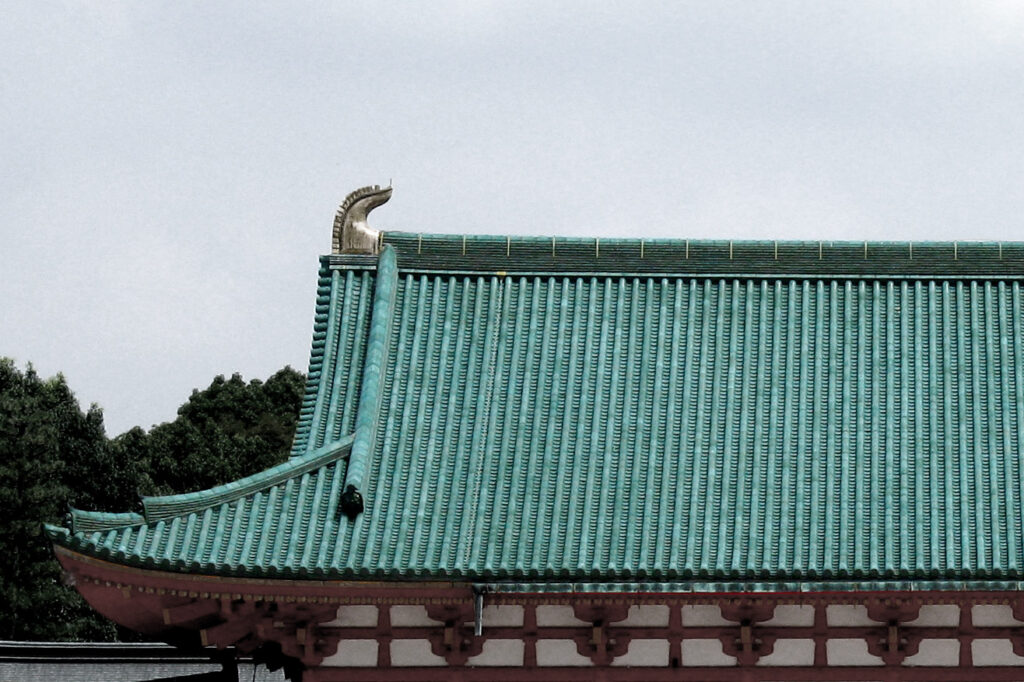In Kokoro (Chapter 4 Section 6) Lafcadio Hearn writes of ‘Dai-Kioku-Den’, which is how Heian Jingu was known on its establishment in 1895. Hearn was in town for the celebrations to mark the grand opening of a monument to mark the restoration of imperial supremacy. (Shrine and temple were used interchangeably in early Meiji, before the terms became standardised as shrine for Shinto and temple for Buddhism.)
The normally reliable Hearn appears to have made a mistake about Emperor Kammu’s succession, since officially he was the 50th of the imperial line, not the 51st. He also writes of the ‘original scale’ of the palace, whereas Heian Shrine is slightly scaled down and modelled on 5/8ths of the Heian-era building. The description below not only shows Hearn’s remarkable gift for colourful description (‘architectural necromany’), but also his fascination with the part played by ‘ghosts’ (i.e. the dead) in Japan’s spiritual culture.
Kyoto, April 21. The noblest examples of religious architecture in the whole empire have just been completed; and the great City of Temples is now enriched by two constructions probably never surpassed in all the ten centuries of its existence. One is the gift of the Imperial Government; the other, the gift of the common people. The government’s gift is the Dai-Kioku-Den,- erected to commemorate the great festival of Kwammu Tenno, fifty-first emperor of Japan, and founder of the Sacred City. To the Spirit of this Emperor the Dai-Kioku-Den is dedicated: it is thus a Shinto temple, and the most superb of all Shinto temples. Nevertheless, it is not Shinto architecture, but a facsimile of the original palace of Kwammu Tenno upon the original scale.
The effect upon national sentiment of this magnificent deviation from conventional forms, and the profound poetry of the reverential feeling which suggested it, can be fully comprehended only by those who know that Japan is still practically ruled by the dead. Much more than beautiful are the edifices of the Dai-Kioku-Den. Even in this most archaic of Japan cities they startle; they tell to the sky in every tilted line of their horned roofs the tale of another and more fantastic age. The most eccentrically striking parts of the whole are the two-storied and five-towered gates, veritable Chinese dreams, one would say. In color the construction is not less oddly attractive than in form,-and this especially because of the fine use made of antique green tiles in the polychromatic roofing. Surely the august Spirit of Kwammu Tenno might well rejoice in this charming evocation of the past by architectural necromancy!

